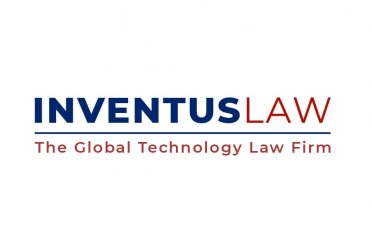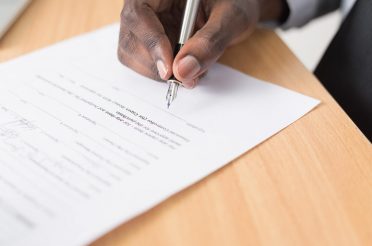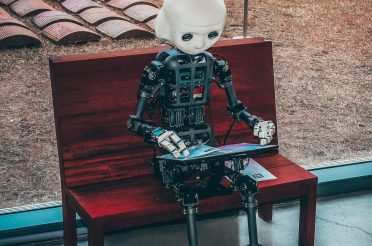Legal Issues in Stem Cell Therapy in the U.S.
Jul 30, 2019 | Fred Greguras
My wife has had osteoarthritis, sometimes called ”wear-and-tear” arthritis, in both of her knees since 2011. She first saw an advertisement for stem cell treatment in 2012 and continued to do research on the treatment. Late in 2018, after ultrasounds on her knees and consultation with several doctors and clinics in California and Colorado, she decided to have stem cell therapy that could regenerate the meniscus cartilage of her knees. Such therapy is a minimally invasive procedure that has the potential to slow the progress of the arthritic damage, repair joint cartilage and avoid or delay invasive knee replacement surgery. Such therapy can help the body repair itself naturally.
We thought it was best to act now before her knees worsened since the earlier the stem cell treatment began, the greater the chances for a successful outcome there would be. The present lack of health insurance coverage was considered, but the treatment cost was reasonable given the potential to avoid more invasive surgery and the timing of treatment. Most insurance plans, including Medicare, define the procedure as “experimental and investigational” and do not cover the therapy.
Based on her research, my wife selected Dr. Jason Glowney of Boulder Biologics to perform the treatment. Her treatment took place in the second week of January, 2019, as an outpatient at a hospital in Boulder, Colorado. The procedure was completed in under four hours. She was injected with her own stem cells (called an “autologous” donation), reducing the risk of immune rejection and other complications.
The medical team used ultrasound to identify the best sites for injection into the damaged tissue of her knees. The same needle remained in each knee site during the treatment, but the injections in each step described below were all done with separate syringes in sequence. There was no mixture of any of the multiple components in a single syringe.
The doctor gave her light oral sedation to help her relax for the procedure and used local anesthetic at the points of cell harvest and injection. No general anesthetic was administered. The procedure began with a harvest of platelet-rich plasma (PRP) from her blood. Her blood was quickly processed through a centrifuge to separate the blood and concentrate the platelets in the plasma, which was then injected to fertilize the knee sites to enhance cell growth. The concentrated platelets contain growth factors along with bioactive proteins that help initiate and stimulate tissue repair and regeneration. (In late May, 2019, she had another PRP injection to stimulate and enhance the growth of the stem cells.)
The next step in the procedure was to harvest her bone marrow, centrifuge it into an injectable volume of aspirate concentrate and then inject the concentrate in both knees. The bone marrow aspirate contains stem cells that can help regenerate bone and cartilage.
The adipose (fat-derived) stem cells used in the next step compliment the bone marrow stem cells. The adipose cells were harvested by a minimally invasive liposuction procedure, centrifuged to isolate the cells and then injected in both knees. The fat on our bodies can be a rich source of stem cells.
Hundreds of thousands of cells were harvested and injected in each step in order to have an adequate number of stem cells for the treatment. The stem cells decide whether to differentiate into bone, meniscus or other cartilage or to simply renew.
My wife was given antibiotic (doxycycline) tablets to take at the end of the procedure and, for a period thereafter, to assist the differentiation process and to help decrease cartilage degradation.
As discussed in more detail below, the doctor’s procedure was designed to involve only simple human cellular and tissue products from the same patient and not to be a new biological product or drug which requires FDA approval. The procedure would be a new biological product or drug requiring FDA approval if there had been more than “minimal manipulation” of each component part. Even a mixture of a patient’s own stem cells and an antibiotic administered from the same syringe would be deemed a new biological product or drug by the FDA.
The doctor gave my wife guidelines for physical activity and medications during the post-injection period. The guidelines were designed to promote the growth of the stem cells to regenerate tissue. The cells are fragile, and she had to be careful not to cause too much stress or shearing on them which could impede growth. Her pain was intense during the first 24 hours, and she stayed in bed much of the time. She used a walker for about the first week. She started physical therapy about six days after the injections with the doctor’s approval. The doctor recommended that she not take any anti-inflammatory medications (like ibuprofen or motrin), for six weeks since they could impede the differentiation of the stem cells. The doctor advised her that most patients don’t feel any knee improvement for at least three weeks and possibly for up to six to eight weeks. If there is no improvement by the six-month point after the injections, then the therapy has not worked.
A self-reporting instrument is used for assessing a patient’s knee status. The 33 items measured are intended to represent all major indicators of knee status. My wife’s measures are all very positive at this six-month point after the procedure. The measurement factors include: (1) knee symptoms such as knee swelling, stiffness and frequency of pain; (2) amount of pain in activities such as walking, standing and going up and down stairs; and (3) degree of difficulty in activities such as walking, bending down and going up and down stairs. Each item is rated on a five-point scale relating to the extent of its occurrence or severity during the past week.
Stem Cell Background
Stem cells are different from other cell types in our bodies because they are capable of renewing (copying) themselves through cell division, sometimes after long periods of inactivity. Stem cells also have the potential to differentiate into other cell types in our body. When a stem cell divides, each new cell has the potential either to remain a stem cell or to differentiate into more specialized cells that form the body’s tissues and organs. In some organs, stem cells regularly divide to repair and replace worn out or damaged tissues. In other organs, stem cells only divide under special conditions.
There are several types of stem cells that are formed at different times in our lives or come from different places in our body. Embryonic stem cells (ESCs) exist in the embryo only at the earliest stages of human development. ESCs are pluripotent, meaning they have the potential to differentiate into almost all cell types in the body. There are social and ethical issues relating to the use of ESCs, since harvesting the cells causes the destruction of an embryo. Many countries, including the U.S., have government-imposed restrictions on either ESC research or the production of new ESC lines.
Somatic or adult non-embryonic tissue-specific stem cells (ASCs) exist in specific tissues throughout the body after early human development. The stem cells injected into my wife’s knees were ASCs. ASCs are multipotent, meaning they can differentiate into more than one type of specialized cell of the body, but not all types. ASCs are generally limited to differentiating into cell types of their tissue of origin, which can help with the replacement of cells from damaged tissue. ASCs can be an autologous stem cell donation, which is less likely to be rejected.
Amniotic stem cells (AMSCs) exist in the amniotic sac, which surrounds a baby in the uterus and remains until the baby’s birth. AMSCs are harvested right after the mother gives birth, without harming the baby. Some clinics make exaggerated claims about the therapeutic potential of ASMCs. AMSCs, however, are also multipotent, and the tissues they can differentiate into are substantially the same as stem cells from adipose (fat) and bone marrow. AMSCs exist only for a limited time, but adipose and bone marrow ASCs continue to be produced throughout our lives and can be harvested from the patient seeking therapy.
Some tissues and organs contain small amounts of ASCs whose function is to replace cells from that same tissue that deteriorate over time or are damaged by injury. For example, blood-forming stem cells in bone marrow can differentiate into red blood cells, white blood cells and platelets. However, blood-forming stem cells don’t generate liver or lung or brain cells, and stem cells in other tissues and organs don’t generate red or white blood cells or platelets.
Pluripotent stem cells have great therapeutic potential but still have major technical issues. Scientists can’t control their differentiation into the many types of cells in the body which can result in unwanted tissue such as tumors. Since such stem cells are not from the recipient, they may also lack the compatibility needed to prevent rejection by the immune system.
Over 10 years ago, researchers identified conditions that enabled some specialized ASCs to be “reprogrammed” genetically back to an ESC-like state. The reprogrammed cells function similarly to ESCs and are called induced pluripotent stem cells (iPSCs). The iPSCs function similarly to ESCs, with the ability to differentiate into almost any cell of the body and to create an unlimited source of cells. iPSCs may ultimately help address the ethical concerns of ESCs and provide new potential for therapy, but there are still technical issues including whether they are actually equivalent to ESCs and the capability to control the differentiation process.
Legal Issues
FDA Approval Requirements
While the U.S. Food and Drug Administration (FDA) moves agonizingly slowly, its priority is human safety which is not the case in many other countries. Some other countries are the Wild West of stem cell therapy and have become medical tourism destinations for high-risk stem cell treatment. The FDA recommends that stem cell therapy is either FDA-approved or is done pursuant to an Investigational New Drug Application (IND), a clinical investigation plan submitted to and permitted to proceed by the FDA. There are many active clinical trials investigating the potential of ASCs listed on the U.S. National Institutes of Health’s website.[1] Stem cell products approved by the FDA are listed on its web site.[2] There is no FDA-approved therapy involving the transplantation of ESCs. ESCs must be not be added to an injection, such as PRP, before it goes into a human.
The FDA regulates human tissues intended for transplant under 21 C.F.R. Part 1271: Human Cells, Tissues and Cellular and Tissue-Based Products (HCT/Ps). Cellular and tissue-based therapies are regulated by the Office of Cellular, Tissue and Gene Therapies within the FDA Center for Biologics Evaluation. There are two primary regulatory pathways for these products. Cellular therapy products that meet all the criteria in 21 CFR 1271.10(a) are regulated solely as HCT/Ps and are not required to be licensed, approved or cleared by the FDA. These products are often referred to as “361 products” because they are regulated solely under Section 361 of the Public Health Service Act (PHSA).[3] The regulatory purpose for such products is to prevent the introduction, transmission and spread of communicable diseases.
If a cellular therapy product does not meet all the criteria in 21 CFR 1271.10(a), it is regulated as a drug, device and/or biological product under the Federal Food, Drug and Cosmetic Act (FDCA)[4] and Section 351 of the PHSA (a “351 product”). The FDA requires premarket approval for such a product. The criteria that determine whether a product is a Section 361 HCT/P or a Section 351 biological product include, primarily, whether a product has been minimally manipulated and is intended for homologous use. Stem cell therapies generally do not satisfy these criteria and therefore are usually regulated as Section 351 products.
In the 2014 decision, United States of America v. Regenerative Sciences, LLC,[5] the court held that a “mixture” of autologous ASCs and other components was a 351 product and subject to FDA approval. Regenerative Sciences, LLC argued that its process did not create a “mixture” but only expanded the patient’s own cells and, therefore, was a simple 361 product which does not require FDA approval. The FDA’s position is that any process involving human cellular and tissue products that includes culturing, expansion and added growth components or antibiotics requires FDA approval as a biological product or new drug because the process constitutes significant manipulation.
The FDA alleged that the product was a 351 product for failure to comply with its “minimal manipulation” provisions and because the resulting stem cells were not intended for homologous use. “Homologous use” means that a human cellular or tissue product is used clinically in a manner that is essentially the same as the natural function. The “homologous use” definition is strictly interpreted by the FDA, so that most innovative ways to use stem cells to potentially treat patients would be through non-homologous usage. The FDA will generally define even modestly different uses as non-homologous.
There are many clinics offering stem cell therapy in the U.S., some which carefully follow the law and others which do not. The FDA has only has brought a small number of enforcement actions because of resource limitations and proof concerns. Enforcement usually occurs in high-profile situations where a patient has died or is severely harmed.
Intellectual Property Issues
The two important types of intellectual property protection relating to stem cell therapy are trade secret and patent protection. For example, the cell harvesting techniques and settings for the centrifuge processing in each step in my wife’s treatment can be protected as trade secret know-how. The culturing and cocktails of growth factors and/or other components in the Regenerative Sciences, LLC case are another example.
There are many patents registered with the USPTO that contain the term “stem cell,” but recently, many human stem-based inventions have been rejected for not being eligible patentable subject matter. Patent-eligible subject matter is defined in 35 U.S.C. Section 101 as: “Whoever invents or discovers any new and useful process, machine, manufacture or composition of matter, or any new and useful improvement thereof, may obtain a patent therefor, subject to the conditions and requirements of this title.” There are three exceptions to subject matter eligibility: laws of nature, physical phenomena and abstract ideas.[6] The “laws of nature” exception has been the basis for rejection of patent eligibility for certain stem cell-related inventions.
There were two important court decisions in 1977 and 1980 relating to patent protection eligibility for the biotechnology industry.[7] The USPTO issued many stem cell patents following these decisions.
Several Supreme Court decisions in the past 10 years, however, have narrowed the scope of patent-eligible subject matter under Section 101.[8] In the Mayo decision, the Court held the invention was not patentable, stating that it effectively claimed the underlying laws of nature. The Court held that a claim that encompasses the use of a natural law must also include additional “elements, sometimes referred to as an ‘inventive concept,’ sufficient to ensure that the patent … amounts to significantly more than a patent upon the natural law itself”.
The scope of patent-eligible subject matter was further narrowed in the Myriad decision, which held that a naturally occurring DNA segment is a product of nature and not eligible for patent protection merely because it had been isolated. The Court looked for “markedly different characteristics from any found in nature” of the isolated gene to determine patent eligibility. The changes resulting from isolation of a gene sequence were considered incidental and not enough to make the isolated gene markedly different.
Three recent decisions in the Federal Circuit indicate that method-of-treatment claims that may involve a law of nature are patent-eligible.[9] Each of the patents required an affirmative treatment step. The decisions seem to hold that a patent directed to detecting a condition in a patient is not Section 101-eligible under Mayo, while a patent directed to using that detection to change some aspect of the patient is eligible. The patent may have been based upon the inventor’s discovery of a law of nature but the patent did not simply claim that law of nature. Rather, it was directed to a specific method of treatment.
The United States Patent and Trademark Office (USPTO) has published guidelines for patent examiners on how to analyze a claim which includes a “nature-based product” for patent eligibility.[10] Claims are to be examined for an inventiveness that has “markedly different characteristics” from naturally occurring products. Patent eligibility for a natural product is to be determined primarily by whether the claimed product possesses any structural, functional and/or other properties that represent “markedly different characteristics” from the natural counterpart. If the claim includes a nature-based product that has “markedly different characteristics,” then the claim is not within the product of nature exception. On the other hand, if the claim includes a nature-based product that does not have markedly different characteristics from its naturally occurring counterpart in its natural state, then the claim is within the product of nature exception and is not eligible for patent protection.[11]
The first step in the analysis is to select the counterpart(s) to compare to the nature-based product. The second step is to identify characteristics to compare, since the analysis is based on comparing the characteristics of the claimed nature-based product and its counterpart. Characteristics can be expressed as the nature-based product’s structure, function and/or other properties, and are evaluated on a case-by-case basis. The final step is to compare the characteristics of the claimed nature-based product to the characteristics of its naturally occurring counterpart in its natural state to determine if the characteristics of the claimed product are markedly different. If there is a change in at least one characteristic resulting from, or produced by, the patent applicant’s efforts or influences, then the change will generally be found to be a markedly different characteristic.
Consumer Protection
My wife was provided with disclosures from the doctor’s office and requested to sign a number of consents and waivers as a condition of receiving therapy. One of the waivers was a no assurance of successful treatment agreement.
State laws protecting consumers against deceptive advertising are applicable to representations about the effectiveness of stem cell treatment. Several state legislatures have debated additional protections for consumers relating to such treatment. California enacted a consumer protection law in late 2017 that requires clinics offering stem cell treatments to disclose if the treatment is not approved by the FDA.
The Federal Trade Commission (FTC) and FDA are pursuing enforcement actions in selected cases that may cause stem cell clinics to be more careful about their representations and activity. In late 2018, the FTC settled charges with a California-based physician and his businesses of deceptively advertising that “amniotic stem cell therapy” can treat serious diseases.[12] The settlement prohibits the defendants from making any health claims in the future unless the claims are true and supported by “competent and reliable scientific evidence.” This was the first enforcement action brought by the FTC against a stem cell clinic.
In early June, 2019, a federal judge granted the FDA an injunction to prevent the U.S. Stem Cell Clinic (based in Florida) from offering treatments using adipose stem cells injected into the spinal cords of patients to treat Parkinson’s disease, chronic obstructive pulmonary disease and other serious conditions.[13] The court held that the defendants misbranded the possible therapeutic effects. The court also determined the clinic failed to prevent microbiological contamination of products which put patients at risk for infections.
Conclusion
As indicated, the status measures for my wife’s knees are all very positive six months after the procedure. She is glad she tried it. I would try the therapy if I have problems with my knees.
The FDA will continue to move slowly to approve stem cell therapies since its priority is human safety. Some other countries have become medical tourism destinations for high-risk stem cell treatment. Many of the claims of such foreign clinics and of some clinics in the U.S. are medically unproven. The FDA and other regulators will continue to bring enforcement actions based on the severity of patient risk and available resources. Obtaining patent protection for stem cell-related inventions is challenging because of the subject matter eligibility issue under Section 101. The recent method-of-treatment decisions in the Federal Circuit may provide a helpful eligibility precedent for some inventions.
[1] See the NIH’s website. [2] See the “Approved Cellular and Gene Therapy Products” page on the FDA’s website. [3] 42 U.S.C. (The Public Health and Welfare), Chapter 6A (Public Health Service). [4] 21 U.S.C. [5] 741 F.3d 1314 (D.C. Cir. 2014) [6] Diamond v. Diehr, 450 U.S. 175 (1981). [7] Diamond v. Chakrabarty, 447 U.S. 303 (1980); In re Bergy, 563 F.2d 1031 (1977) [8] Mayo Collaborative Services v. Prometheus Laboratories, Inc., 566 U.S. 66 (2012); Association for Molecular Pathology v. Myriad Genetics, Inc., 569 U.S.576 (2013). [9] See Vanda Pharmaceuticals Inc. v. West-Ward Pharmaceuticals International Ltd., 887 F.3d 1117 (Fed. Cir. 2018) and Natural Alternatives International v. Creative Compounds, LLC, 2019 WL 1216226 (Fed. Cir. Mar. 15, 2019); Endo Pharmaceuticals Inc. v. Teva Pharmaceuticals USA, Inc. (Fed. Cir. 2019) [10] See the “2106 Patent Subject Matter Eligibility [R-08.2017]” page on the USPTO’s website. The USPTO’s Revised Patent Subject Matter Eligibility Guidance published in January, 2019, does not appear to add any guidance on claims including a natural product. [11] A process claim is generally not subject to the markedly different analysis for nature-based products used in the process. The analysis of a process claim is supposed to focus on the active steps of the process rather than the products used in those steps. [12] See the Federal Trade Commission’s press release “FTC Stops Deceptive Health Claims by a Stem Cell Therapy Clinic.” [13] See the U.S. Department of Justice’s news release “Florida Company Barred from Using Experimental Stem Cell Drugs on Patients.”






